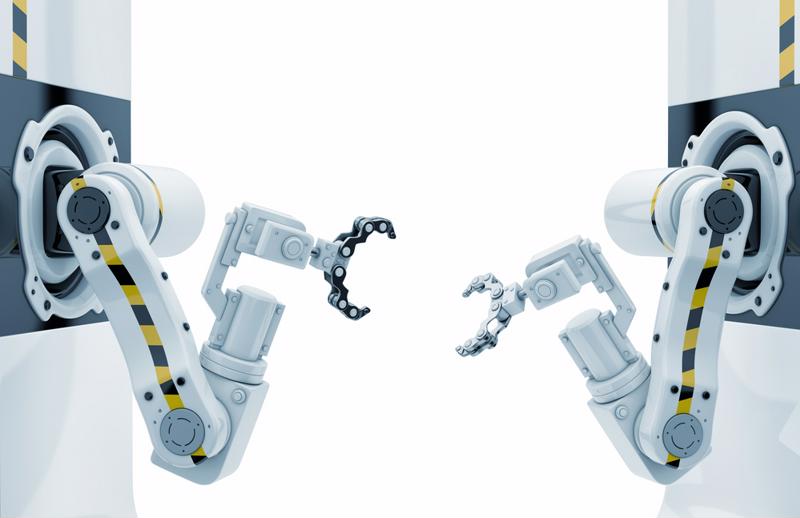
Industrial Ethernet essential as manufacturers look to integrated safety models
By Donna DonnowitzApril 19, 2016
"Safety first" may be a common mantra across many industrial settings, but what does that really mean? What constitutes a safe processes vs. an unsafe one? In particular, how does an organization balance safety and productivity in an operational world where every process must create value or risk falling to the wayside as companies face fiscal pressure on many fronts? These questions leave plenty for industrial leaders to think about, and increasingly, they are coming away with the idea that safety can't just be tacked onto processes after the fact, they must be built into everyday operations.
This is, however, a contentious issue. Building safety functionality into operations often means integrating automation and control networks with other data networks to allow safety and process controls to travel along the same network links. There are considerable potential benefits to be had here, but also enough risks - not to mention disruption of traditional processes - to make the decision a controversial choice, Automation World reported. Ultimately, the key comes down to creating a network that is secure and reliable enough to handle critical safety, automation and control capabilities.
"Integrating safety processes into automation and control networks can improve safety."
The safety integration conundrum
While showcasing examples from a variety of industry stakeholders, the news source explained that the issue of integrating safety processes into automation and control networks presents a somewhat unique challenge. If handled properly, putting this type of functionality into practice can dramatically improve safety by building best practices into everyday operations and aligning data pertaining to safety protocols with what is already going out to machines. However, the risk is often as large as the potential gains.
The report pointed out that integrating all of these functions across the same network creates a situation in which a downtime event or security breach could lead to cascading problems as more areas of the business are affected. This flaw is precisely why companies have largely kept these aspects of operations separate in the past and why there is still some controversy around the idea of unifying them.
According to the news source, organizations have dealt with both of these strategies and found success. However, the move toward integration is growing in popularity. Industry expert Dan Klein explained that extending safety network protocols over field buses, industrial Ethernet systems or other solutions can simplify the network itself and reduce the amount of hardware an organization needs to maintain to support operations. The key here is to use solutions that offer the fail-safe data transmission that is available through traditional models where safety protocols are segregated from other parts of the network. Being able to extend this functionality out to an integrated model ensures that the quality requirements for a safety network are always met.
Using industrial Ethernet tools to bolster integrated safety models
The inherent limitations of Ethernet models - the potential for dropped data packets and vulnerability to environmental factors including heat, vibration and dust - have long held network integration efforts back in industrial settings. This has changed in recent years as Ethernet advances have provided for more reliable, deterministic packet transmission within Ethernet systems as long as the setup is configured to focus on reliable, fail-safe data transit.

Integrating safety networks with automation and control systems depends on fail-safe connectivity solutions.
Industrial Ethernet is taking these core advances to another level by providing the hardiness and protections necessary to support full Ethernet integration in extreme environments such as factory floors. Hardware designed to operate in such settings is built to withstand the harsh vibrations created by machinery operating in the area, the dust and debris in the air and the extreme temperatures that can emerge. These environmental conditions would normally cause performance problems within Ethernet systems, making them inadequate for use in automation and control environments, let alone for safety processes.
Building a network that can move data pertaining to safety protocols without fail no longer requires legacy network solutions. Instead, organizations can make the move to Ethernet and find success. This can empower them to improve safety by baking it into the same networks that are moving their other data, providing greater responsiveness and more intuitive data workflows. At the same time, it can reduce the hardware footprint and infrastructure complexity that come with building distinct networks for various industrial processes.
Flattening industrial network architectures through Ethernet can help organizations eliminate many of the traditional innovation barriers that have held them back. By getting more data to more locations in the most efficient way possible, manufacturers can streamline operations, including those pertaining to enacting safety controls within automation and control networks. Industrial Ethernet switches make this possible by providing the reliability and security companies need without creating the risk that would come with traditional Ethernet equipment. This results in the kind of fail-safe network system needed to make safety and automation and control network integration a realistic option.
Perle has over 516 models of Managed Industrial Ethernet Switches with the vast array of options including 10/100/1000 Ethernet, PoE, fiber and combo ports. Perle IDS Industrial-grade Ethernet Switches are ideal for the harsh environments found in industrial factory systems and outdoor applications.



